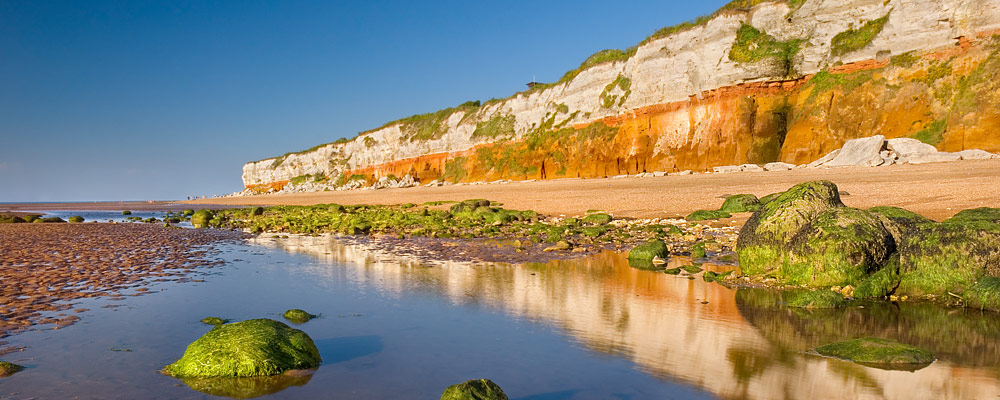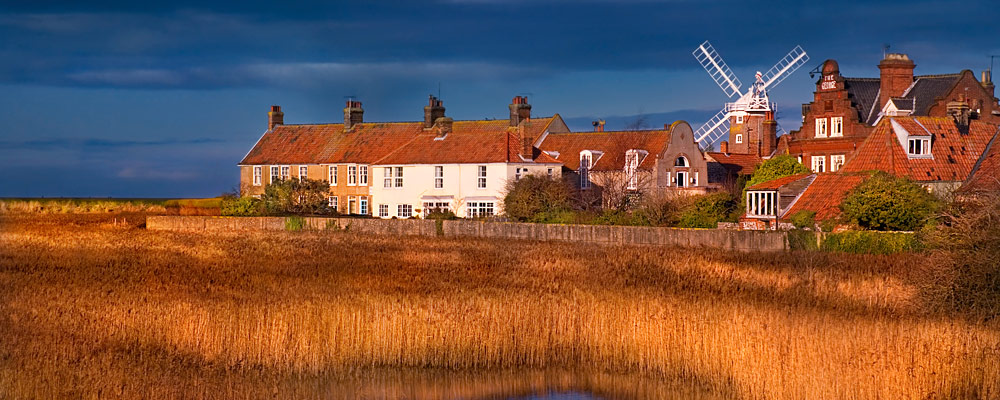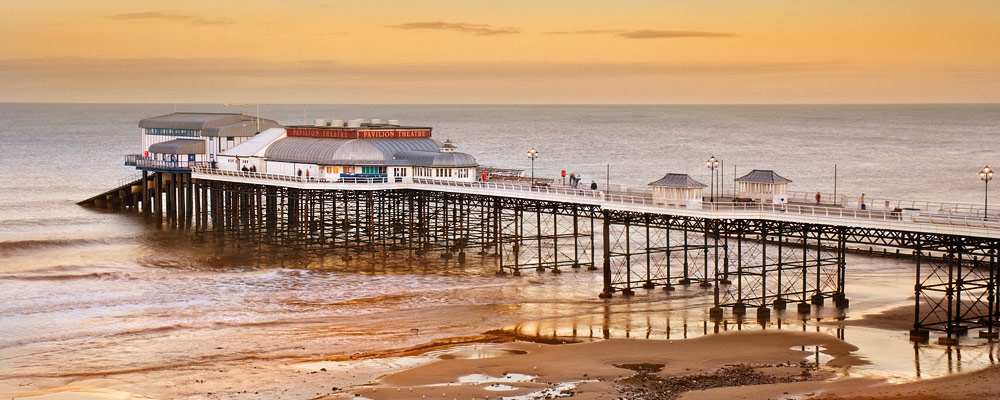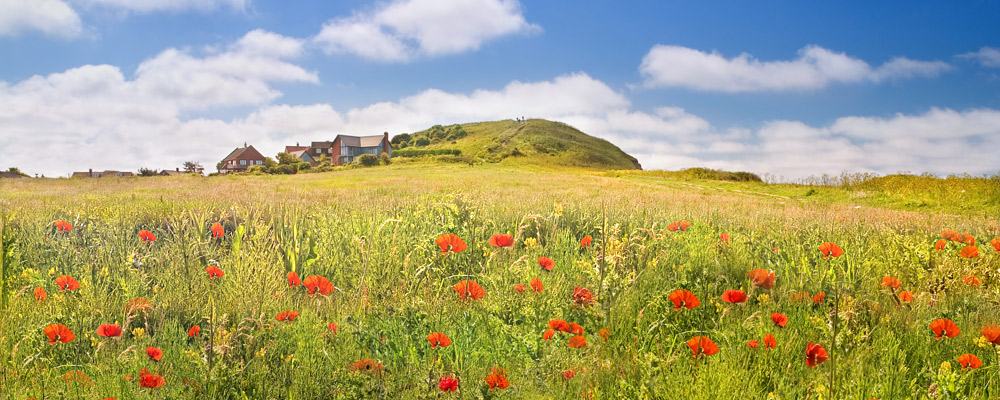The Norfolk Coast Path stretches along wild and magnificent coastline for roughly 47 miles. You cannot take horses here nor bicycles, although there is a special cycleway just a little inland.
Walking the Norfolk Coast
Beginning at Hunstanton, a complete new town built by Henry Le Strange in mid Victorian times and, before that, the landing place of St Edmund, the first Patron Saint of England, you walk past Holme and on to Thornham. Whilst at Thornham you will see a land of rolling mists and the legendary and mysterious Thornham stumps.

The three layered cliffs at Hunstanton are rich with fossils
The path continues past Brancaster which, apart from being incredibly beautiful, is legendary in being the spot where Norfolk’s greatest sea hero, Admiral Lord Nelson, gained his love of the ocean. We took a breather in Burnham Deepdale as it is a good stopping-off point with a campsite, information centre, shops and cafes. The panorama is simply stunning.
From here it is about 8.1 miles to Holkham, along one of Norfolk’s most beautiful stretches of coastline. You may get blown about a little! You may like to visit Holkham Estate, home of the famous Thomas Coke whose ancestor, the 1st Earl of Leicester, built a beautiful house and began the task of reclaiming this hitherto barren land for agriculture.
For many, the next stage of the walk – about 7.2 miles to Stiffkey – is paradise and passes through Wells next the Sea with its endless sandy beaches.
You may well spare a thought for the Rector of Stiffkey, Howard Davidson, as you pass by. He was by all accounts a fine priest who fell fowl of some powerful local people due to his habit of travelling to Soho in London and helping the prostitutes there. In 1932 he was found guilty of immorality and defrocked. Ever the showman and determined to demonstrate his innocence, he took to appearing in a fairground at Blackpool. He would enter the cage of a lion and lioness and talk to the ticket holders. Unfortunately, in the performance on 28 July 1937, he stood on the tail of the lioness and was killed by the lion. There was great grief at his funeral and, right up to today, people talk of him, most considering him quite innocent fo the charges laid against him.

Cley next the Sea village and mill
Then the walk continues to Cley, to Weybourne and Cromer. You will pass through Salthouse, once very prosperous as salt was a most valuable commodity in days gone by. It was also the home of one, Onesiphorous Randall, who built a lovely house. On the beach. He put a canon in front of his domain to stop prying eyes as often a carriage could be seen whisking along the sands carrying a beautiful lady. The ‘folly’ as it was known lasted until 1953 when it was duly carried away by the sea.



